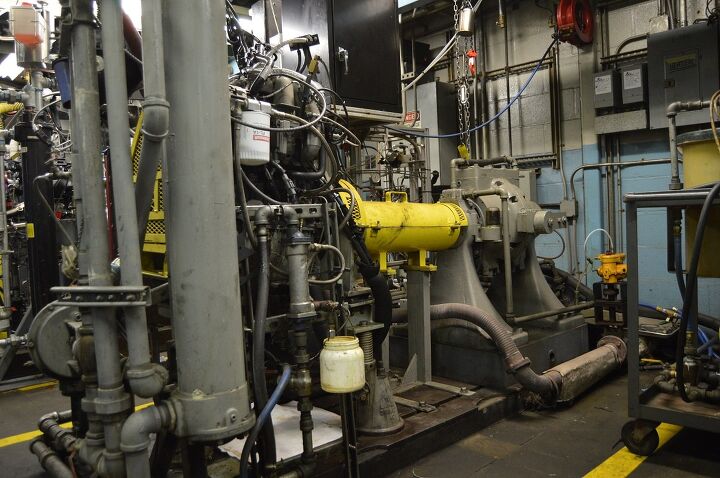AAA Study Finds Drastic Differences In Gasoline Quality

AAA hired an independent lab to complete 4,000 miles of simulated driving to compare Top Tier gasoline with the cheaper blends. Their findings show that the additive packages in Top Tier gas resulted in fewer carbon deposits than those found in the non-Top Tier gasoline test.
The study also found that there were some secondary benefits to the better additive packages, including slightly better fuel economy and better drivability. The benefits are apparent, but do consumers really care?
The Top Tier gasoline specification was created by a group of automakers in 2004 in response to the minimum gasoline detergent standard introduced by the EPA in 1995. The EPA standard was designed to meet emissions targets but didn’t account for engine longevity. So, automakers created a new higher standard to prevent long-term issues such as clogged fuel injectors and contaminated combustion chambers.
Top Tier gasoline is widely available and can even be found at wholesale retailer Costco. Most gasoline comes from similar sources and is transported along the same pipelines until it reaches a local distributor. The distributor sells the gas to local stations and blends in an additive package based on the brand and specification. Some gasoline gets a very basic additive package but Top Tier gas gets a very specific package that has been tested to meet the Top Tier standards.
According to the AAA study, the non-Top Tier fuel caused carbon deposits that were 19 times higher than the deposits from the Top Tier fuel. They also saw better drivability and better fuel economy when the better fuel was used. Emissions were also reduced, likely due to the ban of metallic additives in Top Tier fuel.
The laboratory completed the test on a Ford port injected 2.3-liter engine, which appears to be the Lima engine from the late 1980s. This engine has been used for testing for about 15 years and is a popular one, due to the orientation of the valves (which shows the difference in carbon deposits in just 100 hours of testing). The full report shows compares the average 34.1 milligram carbon deposit in the Top Tier fuel test to the average 660.6 mg carbon deposit in the non-Top Tier fuel test.
The technical results are clear but the second part of the study looks at whether they really matter to consumers. The AAA survey found that 63 percent of drivers who responded believe that quality of gasoline differs between retailers, but only 12 percent use the additive package as a deciding point when making a purchase. The two main things that actually drive purchase decision are the location of the gas station and the price of fuel, with almost three quarters of respondents saying those factors motivated them the most.
Although the study makes it seem like your engine is doomed if you use lower-level fuels, there is an upside. Switching to a Top Tier gasoline has shown reductions in carbon deposits on an engine previously run on lower level gasoline, and the cost difference to switch is only a few cents per gallon. It may be worth it to make the jump.
[Images: AAA]

More by Bozi Tatarevic
Latest Car Reviews
Read moreLatest Product Reviews
Read moreRecent Comments
- SCE to AUX All that lift makes for an easy rollover of your $70k truck.
- SCE to AUX My son cross-shopped the RAV4 and Model Y, then bought the Y. To their surprise, they hated the RAV4.
- SCE to AUX I'm already driving the cheap EV (19 Ioniq EV).$30k MSRP in late 2018, $23k after subsidy at lease (no tax hassle)$549/year insurance$40 in electricity to drive 1000 miles/month66k miles, no range lossAffordable 16" tiresVirtually no maintenance expensesHyundai (for example) has dramatically cut prices on their EVs, so you can get a 361-mile Ioniq 6 in the high 30s right now.But ask me if I'd go to the Subaru brand if one was affordable, and the answer is no.
- David Murilee Martin, These Toyota Vans were absolute garbage. As the labor even basic service cost 400% as much as servicing a VW Vanagon or American minivan. A skilled Toyota tech would take about 2.5 hours just to change the air cleaner. Also they also broke often, as they overheated and warped the engine and boiled the automatic transmission...
- Marcr My wife and I mostly work from home (or use public transit), the kid is grown, and we no longer do road trips of more than 150 miles or so. Our one car mostly gets used for local errands and the occasional airport pickup. The first non-Tesla, non-Mini, non-Fiat, non-Kia/Hyundai, non-GM (I do have my biases) small fun-to-drive hatchback EV with 200+ mile range, instrument display behind the wheel where it belongs and actual knobs for oft-used functions for under $35K will get our money. What we really want is a proper 21st century equivalent of the original Honda Civic. The Volvo EX30 is close and may end up being the compromise choice.



































Comments
Join the conversation
Curious as to who paid for this 'survey'.
Funny how Gulf and Sunoco aren't Top Tier but either's gas is good. Costco's gas may be Top Tier but may 2014 car's engine drives more noisily every time after fill up while fuel efficiency was adequate. Switching out the gas on the next fill-up like Gulf/Sunoco/whatever brand made my car's engine more quiet, perform more smoothly and fuel efficiency increased! Explains why I don't frequent Costco's gas station much anymore even for the few cents/gallon savings. Guess it depends on what additives are added into the gasoline by each manufacturer. But that doesn't always justify the higher price. In my area (New England), Mobil has ALWAYS cost more like ~$.25/gallon MORE than other [leading] brands of gasoline. What a rip-off!